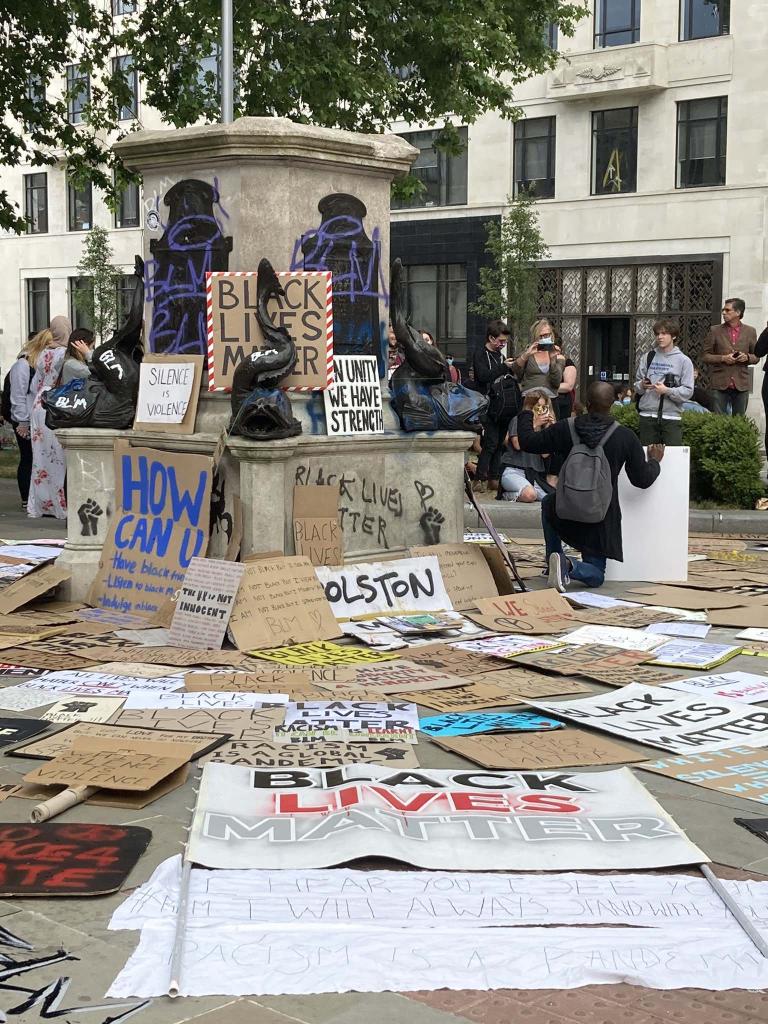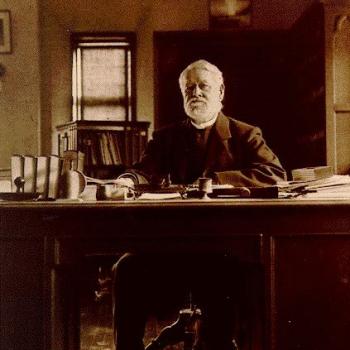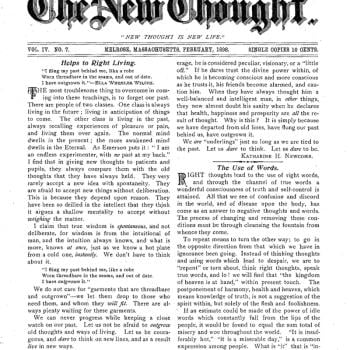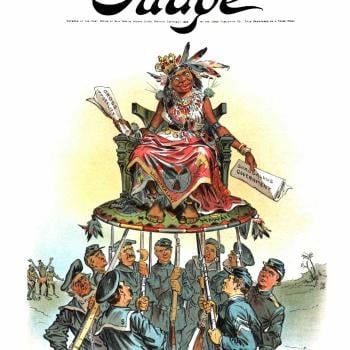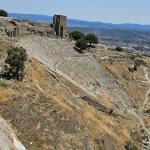I have been posting about my current book project, Storm of Images, which concerns the Iconoclasm in the Byzantine empire back in the eighth and ninth centuries. At first sight, that might seem like an arcane topic, but actually, it is hard to think of anything more topical today, or controversial, than iconoclasm or image breaking. If you have been alive and conscious these past few years, you know all about iconoclasm and the issues it raises.
Image smashing arises from two distinct impulses, which at first sight seem very different, but which shade into one another. Some iconoclasm grows out of hatred of a particular individual or the beliefs and causes that they represent. Other “breakers” may truly venerate or love the individuals depicted, but they reject the means in which they are given material representation. In the first category, the smashers are striking at the figures represented, and trying to purge their evil and unwanted memories. Commonly, when images are suppressed, they are replaced with other statues or figures or inscriptions presenting other characters more acceptable to the new public mood.
Examples abound. Such were the attacks on Soviet and Communist images following the collapse of the Eastern Bloc in 1989. More recently, we see the very widespread modern-day American assaults on statues of Confederate heroes such as Nathan Bedford Forrest or Robert E. Lee. Through attacks on objects, activists or protesters are attacking the larger causes represented by those images, such as white supremacy or the legacies of slavery. In addition to removing objects, protesters also sought the removal of any and all names commemorating those heroes of what was seen as an utterly unjust social order. The Romans called this process damnatio memoriae.
In this sense, the United States has since 2020 experienced a historically very sizable and socially influential outbreak of iconoclasm. Similar events have occurred in nations like Great Britain, where anger over social justice issues found a focus on the statue of pioneering slave trader Edward Colston, which was toppled and thrown into a harbor. In response to this transnational upsurge, the volume of scholarly and polemical literature on the general subject of iconoclasm in recent years has been very substantial.
In some cases, images are destroyed or removed because the subjects they depict have come to be hated or despised. In other instances, the target is not the figures memorialized, but rather the way in which they are commemorated. Far from seeking to condemn the figure represented, activists might in fact be driven by the exalted view that they have of that person, and are agitated by the very principle of representing them in material or visual form. That is why the Byzantine Iconoclasts pulled down great images of Christ or the Virgin.
A modern-day analogy suggests itself. Around the world today, a great many religious believers have lived through instances of religious-driven image breaking that is far less spectacular than that of Iconoclast era or the Reformation, and certainly less violent, but which in its effects has been far more sweeping.
During the 1960s, the Roman Catholic church held its Second Vatican Council, which provoked a widespread reformist mood that went far beyond the more limited agendas outlined at the formal gatherings themselves. Individual bishops and clergy used the broad guidelines approved by the church to institute a near-revolution in devotional life and practice. Churches worldwide were reconstructed to place far less emphasis on once-familiar figures of saints and the Virgin, which were often removed. As newer churches were built, they followed a Modernist aesthetic that left little space for statues, images, or stained glass, except using abstract designs. In a great many instances, Catholic churches became image-free (aniconic) to a degree that would have seemed incredible just a few years earlier. In the same years, churches restructured to reduce their emphasis on liturgy and the role of clergy, while greatly enhancing the role of the laity, and of lay participation. Clerical careers became vastly less popular, while monastic orders lost huge numbers of their existing members.
It was in this context that I had my personal encounters with an active and literal iconoclast, a brilliant English priest who had entirely imbibed the “Vatican Two” ethic at its most radical. Inheriting a church building with a number of very traditional statues of the Virgin and saints, he one day approached the housekeeper to ask if she would kindly clean up the mess in the chancel. As the cleaner found, the priest had used a hammer to smash all the statues. Far from hating the Virgin Mary, he had a special devotion to her, but he had acted to prepare the way for a whole new aesthetic in the sacred space, one that decentered the role of the priest, and of the altar at which he served. Those older external forms, including the statues, were dismissed as clutter, that were irrelevant or worse to any kind of serious faith. He wished to send a sharp lesson to the many believers who focused their spirituality on those plaster saints, in order to refocus their attention on spiritual realities. His actions went far beyond anything contemplated by higher church authorities, and were not approved by the great majority of lay faithful.
The priest’s act symbolized a spiritual transition that would have been instantly comprehensible to eighth century iconoclasts, who likewise held an exalted vision of the Eucharist as the most perfect image of Christ. If such forceful direct action was not commonplace in the Catholic world in the decade or so after 1965, it was by no means unique. Far more frequent was the experience of older believers who were appalled to find sacred statues in the process of being dismantled and carried from church premises to be consigned to garbage. But as in other historical instances, the removal of images was less significant than the sudden and even incendiary way in which it was achieved, which sent an unforgettable message about the end of one religious order, and the commencement of a new. Naturally, the tale of this priest smashing statues spread far and wide, which was part of the intent. From a personal perspective and in a very modest way, living through the whole affair was like watching a reformation in progress.
To varying degrees, those changes affected the treasured beliefs of hundreds of millions of people. A religious revolution thus began with a series of decisions initiated from the highest ranks of the church, which ran out of control during the process of implementation. I find that analogy enormously helpful in understanding the Iconoclasm of past eras.
So I do think that the topic of iconoclasm has a powerful contemporary resonance.


